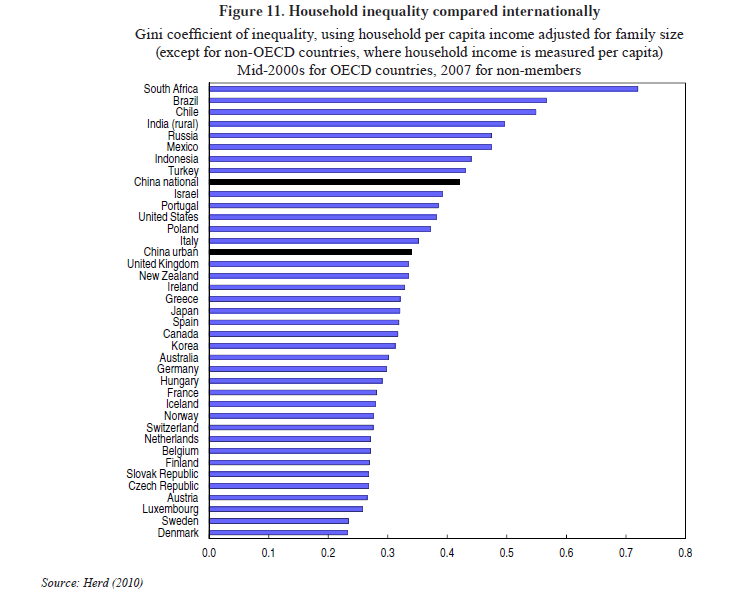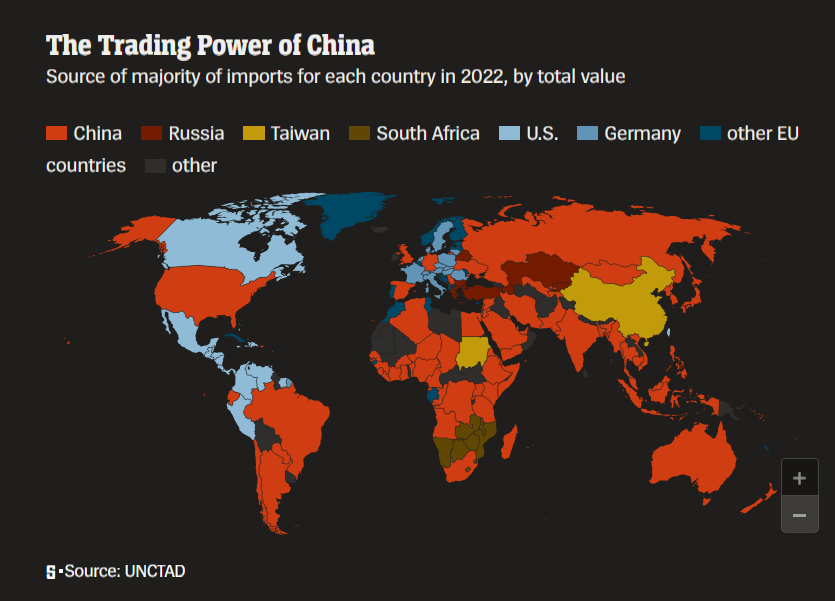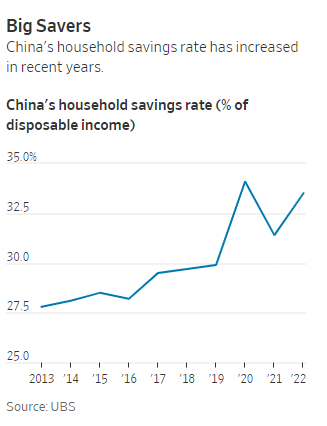China has become the driver of global economic growth for many years now. As a communist country following a “Market Socialism” philosophy China continues to grow despite slowdown in developed economies and other emerging markets.
The following is brief overview of few of the statistics on China’s incredible growth. From a recent OECD report:
Ten years ago, on the eve of the 2001 slowdown, the world economy was expanding at a rate of close to 5% and China accounted for just over one tenth of that growth. Last year, as the world bounced back from the worst recession since the Great Depression, and growth was once again close to 5%, China contributed almost one third of global growth. In the meantime, it had become the world’s second-largest economy.
Ten years ago, China’s current account surplus stood at less than 2% of GDP, and its foreign exchange reserves at $166 billion, or 14% of GDP. Last year, China’s current account surplus exceeded 5% of GDP, down sharply from its 2007 double-digit peak, but still too high for comfort, while foreign exchange reserves towered at $2.85 trillion, or half of China’s GDP.
Two decades ago China accounted for less than 4% of global GDP at PPP exchange rates. Since then China’s sustained and rapid economic growth has pushed the share to 13% by 2010 as shown in the graph below. Meanwhile from 2000, the U.S. share of global GDP has decreased at a consistent pace.
China’s 12th Five Year Plan runs from 2011 to 2015. This plan outlines policies to changing the country from being the factor-floor of the world to more of a technology-based economic power. A an example of China’s successful transformation to a high-tech economy is the buildup of high-speed rail lines across the country.The stark contrast between this initiative and that of the situation in the U.S. couldn’t be more shocking.
From an article in Yale Environment 360:
China has committed to investing $360 billion to vastly expand its showcase network of high-speed trains, which already carry passengers at more than 200 miles per hour between some of the country’s largest cities.
Spain, despite its economic woes, is investing $170 billion to extend its acclaimed high-speed rail system, which now makes the 386-mile Madrid-Barcelona run in just 2 hours, 38 minutes — compared to six hours by car. A similar boom in high-speed rail construction is taking place throughout Europe, from the boot of Italy to the Baltic Sea.
Worldwide, nations not normally associated with the bullet train revolution — India, Brazil, Argentina, and Morocco, among others — are making plans to build high-speed rail networks. They understand that rapid, inter-city rail systems will be essential to developing competitive 21st-century economies as oil supplies dwindle, highways and airports face increasing congestion, and pressure to reduce carbon emissions rises.
And the United States? For the past several months the news on the high-speed rail front has been dominated by several governors, swept into power by the Tea Party movement, proudly proclaiming that they will have nothing to do with high-speed rail projects, which they contend are boondoggles. Indeed, the governors of Florida, Wisconsin, and Ohio have collectively rejected $3.6 billion in federal funds that would have covered nearly all of the cost of building rail lines on such routes as Orlando to Tampa, Milwaukee to Madison, and Cleveland to Columbus.
Unlike other emerging countries China’s economic growth does not seem to benefit only a small section of the population. Income inequality as measured by the Gini coefficient is not very high relative to other countries such as Brazil, India and Russia.
Source: China’s Emergence as a Market Economy: Achievements and Challenges, OECD contribution to the China Development Forum, 20-21 March 2011, Beijing.




